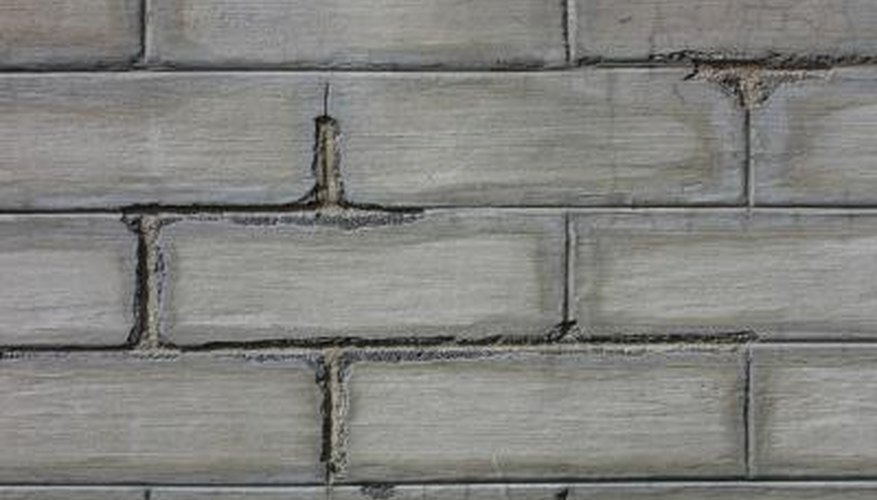A crack in a brick wall is never a good thing, as even small cracks can be indicative of larger problems throughout your entire structure. Some cracks, however, are worse than others. Bricks continue to expand after placement, and unless provision is made for this expansion, the result will be cracks along the mortar lines. While unattractive, these expansion cracks are not necessarily dangerous to the overall structural integrity of the building. Other types of cracks in a brick wall, though, can result in serious structural damage, so it's important to know how to tell a bad crack in your wall from an expansion crack.
- A crack in a brick wall is never a good thing, as even small cracks can be indicative of larger problems throughout your entire structure.
- Other types of cracks in a brick wall, though, can result in serious structural damage, so it's important to know how to tell a bad crack in your wall from an expansion crack.
Examine the crack location and the course of the crack through the wall to determine the likely cause of the damage. Cracks located at the base of the building or following horizontal lines across the face of the brick walls are likely signs of bad cracks that can lead to eventual failure of the brick.
Check cracks at the base of the walls. If wider at the crack top than the bottom, they may be subsidence cracks, resulting from underground activity. These cracks often occur at the corners of the walls or run the full height of the wall. If the crack is wider at the base, the cause is likely ground heave, resulting in movement of the foundation of the wall. They're less dangerous than subsidence cracks, but can still lead to structural damage.
Examine horizontal cracks throughout the mortar for metal ties evident within the crack interior. If present, the crack is a wall tie failure. The wall ties hold the brickwork in place, and with failure can release the skin of brickwork on the outside of the wall.
- Check cracks at the base of the walls.
- The wall ties hold the brickwork in place, and with failure can release the skin of brickwork on the outside of the wall.
Determine if the crack follows the path of mortar along the bricks, usually in a zigzag pattern. Examine the space between the bricks and compare it to the spacing of intact mortar. If the spacing is wider, then the zigzag crack is likely the result of expansion.
